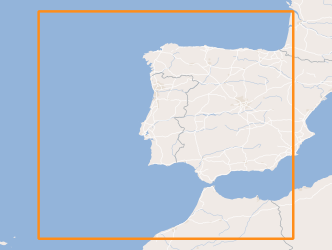Topic
environment
264 record(s)
Type of resources
Available actions
Topics
INSPIRE themes
Keywords
Contact for the resource
Provided by
Years
Formats
Representation types
Update frequencies
Status
Scale
Resolution
geoDescCode
cartografia
geographicCoverage
geographicCoverageDesc
inspirecore
hvd
referenceDateRange
denominatorRange
resolutionRange
dataPolicy
openServiceType
dataType
dataFormat
-
-

Ocean thermal fronts are produced daily "detected" with the SIED algorithm - Single Image Edge Detection (Cayula and Cornillon, 1992) applied to satellite images of the sea surface temperature (SST), made available by the CMEMS (Copernicus Marine Environment Monitoring Service) and DEIMOS, is run by Meteo France CMS over EUROPE.
-
-

Ocean thermal fronts are produced daily "detected" with the SIED algorithm - Single Image Edge Detection (Cayula and Cornillon, 1992) applied of the sea surface temperature in the HYCOM model (HYbrid Coordinate Ocean Model) available at DEIMOS and provided / supplies by IH.
-
The CONVERT project aimed at identifying, in an objective and quantitative way, the different types of endogenous biomass that can be applied in the short-medium term to economically viable technological solutions for the production of power and heat, energy vectors, and especially advanced biofuels. These should comply with all the sustainability criteria set by the European Directives, in particular the Red II (2015/1513) Directive. This project included the following activities: Activity 1 - Energy potential of the organic fraction of solid urban waste; Activity 2 - Energy potential of biowaste produced under industrial context; Activity 3 - Potential of mainland Portugal for energy crops; Activity 4 - Conversion technologies and respective energy products; Activity 5 - Life Cycle Analysis and estimation of Sustainable Value and Activity 6 - Communication plan. As part of Activity 3, LNEG developed a spatial data infrastructure to facilitate the exchange and use of information between all the beneficiary agents in a first phase, with visualization and consultation via the web. These data are crucial for choosing locations for energy crops/microalgae and for selecting the species to cultivate, while also identifying critical or limiting locations for their utilisation.
-
O presente conjunto de dados geográficos integra as peças cartográficas do Plano de Gestão das Áreas Terrestres do Parque Natural da Ilha do Pico (PGPNIP), publicado pelo Decreto Regulamentar Regional n.º 18/2020/A, de 10 de agosto de 2020. O PGPNIP é, nos termos da legislação em vigor, um “plano de gestão”, na aceção do regime jurídico da conservação da natureza e da biodiversidade, aprovado pelo Decreto Legislativo Regional n.º 15/2012/A, de 2 de abril, e estabelece o regime de proteção e conservação dos recursos e valores naturais presentes na respetiva área de intervenção. O PGPNIP tem a natureza de regulamento administrativo, constituindo-se como uma condicionante ao uso e ordenamento do território, e integra, nos seus elementos fundamentais, uma Planta de Zonamento e uma Planta de Condicionantes, ambas elaboradas à escala de 1:25.000. A área de intervenção do PGPNIP abrange as zonas emersas das áreas protegidas integradas no Parque Natural da Ilha do Pico, criado pelo Decreto Legislativo Regional n.º 20/2008/A, de 9 de julho, bem como as áreas de continuum naturale, abrangendo os corredores ecológicos e outras áreas importantes para as espécies e habitats fora das áreas protegidas.
-
Pontos de Água
-
O Mapa de Ruído Diurno é um dos elementos constituintes do projecto da Carta de Ruído do Município do Montijo. Nesta carta é avaliado o impacto no território das fontes de ruído diurno.
-
A Carta dos Espaços Verdes do concelho sintetiza no mesmo documento o conjunto de espaços verdes existentes no território Oeste do concelho.
-
O presente conjunto de dados geográficos integra as peças cartográficas do Plano de Gestão das Áreas Terrestres do Parque Natural da Ilha do Faial (PGPNIF), publicado pelo Decreto Regulamentar Regional n.º 16/2020/A de 3 de agosto. O PGPNIF é, nos termos da legislação em vigor, um “plano de gestão”, na aceção do regime jurídico da conservação da natureza e da biodiversidade, aprovado pelo Decreto Legislativo Regional n.º 15/2012/A, de 2 de abril, e estabelece o regime de proteção e conservação dos recursos e valores naturais presentes na respetiva área de intervenção. O PGPNIF tem a natureza de regulamento administrativo, constituindo-se como uma condicionante ao uso e ordenamento do território, e integra, nos seus elementos fundamentais, uma Planta de Zonamento e uma Planta de Condicionantes, ambas elaboradas à escala de 1:25.000. A área de intervenção do PGPNIF abrange as zonas emersas das áreas protegidas integradas no Parque Natural da Ilha do Faial, criado pelo Decreto Legislativo Regional n.º 46/2008/A, de 7 de novembro e alterado pelo Decreto Legislativo Regional n.º 7/2019/A, de 27 de março, bem como as áreas de continuum naturale, abrangendo os corredores ecológicos e outras áreas importantes para as espécies e habitats fora das áreas protegidas.
